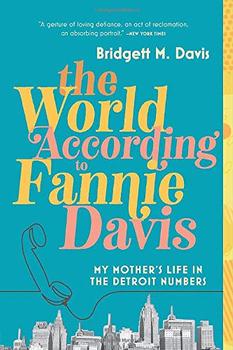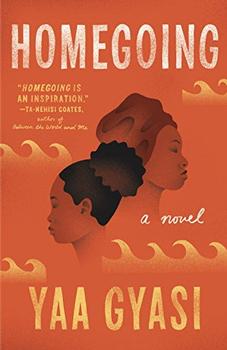Summary | Excerpt | Reviews | Beyond the book | Read-Alikes | Genres & Themes | Author Bio

The Turner House opens in spring 2008, a time characterized by simultaneous despair and hope for Detroit's African-American community. On the one hand, the city was in the throes of financial crisis – unemployment was high and property prices had crashed to all-time lows (see 'Beyond the Book'). On the other hand, the prospect of President Obama's election sparked a new note of optimism. Over the course of just five weeks, the 13 middle-aged Turner children have to face their various demons as they come together to decide what will become of their ailing mother's house.
The novel prioritizes the experiences of the oldest and youngest Turners, Cha-Cha (Charles) and Lelah. Cha-Cha is haunted, literally, by a formative experience from his youth. One night when he was 14, a 'haint' (a Southern colloquialism for a ghost or apparition) tried to push him out his bedroom window. Fifty years later, it comes back for him: this sixty-something trucker, married with two sons, is spooked and runs his truck off the road. Hearing talk of ghosts in the hospital, an insurance agent stipulates that for Cha-Cha to keep his job he must speak to a psychiatrist. In appointments with his comely female therapist, Cha-Cha ponders the past: "Had his childhood been a happy one? The question felt irrelevant." As one sister says, "We weren't traumatized. Just poor."
Lelah, 40, has problems of her own. A victim of domestic violence, she used to live with her daughter Brianne in a Detroit apartment. Brianne has a young son and Lelah is struggling to be a good mother and grandmother. Her gambling addiction has wiped out all her savings and lost her a job with the telephone company due to all the loans from colleagues she never repaid. When she is finally evicted from her apartment, Lelah feels she has no choice but to go back to the Turner House on Yarrow Street. She lives there like a squatter, pawning family valuables and begging unemployment benefits, all along hoping no one discovers her secret.
The matriarch Viola, in her eighties, has been living with Cha-Cha in his home, but when she is diagnosed with a terminal illness, the Turners agree it is time to decide what will become of the house. It is only worth $4,000, yet Viola still owes $40,000 to the bank. One option is to short-sell the property back to the bank; another is for the youngest Turner son, Troy, to buy it at value price and keep it in the family – though this would involve some lies.
Through flashbacks to the mid-1940s, when the patriarch Francis first left Arkansas for Detroit, Flournoy shows how important the house has been in the family's life. With nothing but a letter of recommendation from his pastor in hand, Francis stayed in a boarding-house and had a string of ill-fated jobs and run-ins with racist police. "What was it about himself that people in this city wanted to knock down?" he wondered. For a while it appeared he would never be solvent enough to bring Viola, then working as a maid, and baby Cha-Cha to join him. Thus the Yarrow Street house and their 12 further children are symbols of success; Francis and Viola "thought their children would be an army unto themselves…forming an unbreakable, outward-facing chain."
Flournoy based the Turners on her father's family – he, too, was one of 13. Although for personal reasons it must have been important to repeat the number 13, to me it felt like there were too many characters. Unlike in Ayana Mathis's The Twelve Tribes of Hattie or Hanna Pylväinen's We Sinners, where each sibling gets their own chapter, some Turners are only mentioned in passing. One of the best chapters has Cha-Cha contacting each one to get their take on the haint; this is the first and only time we meet some of the siblings. If there was a reduction to, say, six or seven, readers could get to know them all.
The novel uses African-American dialect and imagery to good effect. For instance, Viola says, "You know Cha-Cha's gone do what he wanna do. Ain't no democracy in this family." Her speech sounds authentic but doesn't tip over into the realms of caricature. I also liked this down-home metaphor Flournoy applies to Francis: "his skin was the color of baked-right cornbread." Along with the superstition about haints, these touches are gentle reminders of the family's Southern origins.
As the book ends, Cha-Cha faces his ghosts and the family hosts a final birthday party for Viola. The Detroit city motto would apply here. They have been through so much – addictions, losses, betrayals – but still, "We hope for better things."
![]() This review was originally published in The BookBrowse Review in April 2015, and has been updated for the
April 2016 edition.
Click here to go to this issue.
This review was originally published in The BookBrowse Review in April 2015, and has been updated for the
April 2016 edition.
Click here to go to this issue.

If you liked The Turner House, try these:

The World According to Fannie Davis
by Bridgett M. Davis
Published 2020
A singular memoir that tells the story of one unforgettable mother, her devoted daughter, and the life they lead in the Detroit numbers of the 1960s and 1970s.

by Yaa Gyasi
Published 2017
Winner of the 2016 BookBrowse Debut Author Award
A novel of breathtaking sweep and emotional power that traces three hundred years in Ghana and along the way also becomes a truly great American novel. Extraordinary for its exquisite language, its implacable sorrow, its soaring beauty, and for its monumental portrait of the forces that shape ...
Show me the books he loves and I shall know the man...
Click Here to find out who said this, as well as discovering other famous literary quotes!
Your guide toexceptional books
BookBrowse seeks out and recommends the best in contemporary fiction and nonfiction—books that not only engage and entertain but also deepen our understanding of ourselves and the world around us.